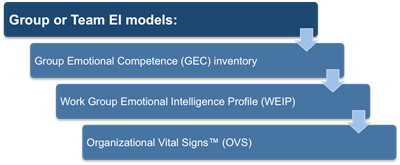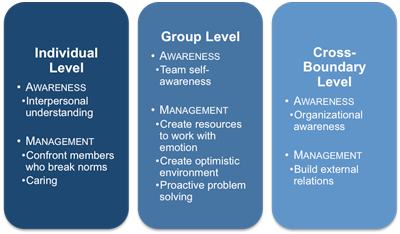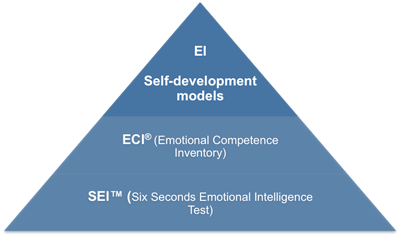Mixed Models of Emotional Intelligence
Many websites and popular books on emotional intelligence use quite different definitions of it than the one used here. For example, one well-known model by Daniel Goleman (1998) includes over 25 characteristics of emotional intelligence, including everything from emotional self-awareness to such diverse qualities as teamwork and collaboration, service orientation, initiative, and achievement motivation.
 |
Such characteristics certainly are important personality traits. A crucial question to ask, however, is whether they have anything to do either with emotion, intelligence, or their combination.
Models that mix together emotional intelligence qualities with other personality traits unrelated to either emotion or intelligence are often referred to as mixed models of emotional intelligence. The term 'mixed model' stems from the fact that the models mix together the core idea of emotional intelligence with a variety of other personality traits.
Group or Team EI Models
In recent years there have been several models developed to assess emotional intelligence and competency within groups and organizations - for example, GEC, WEIP, and Organizational Vital Signs™ (OVS™).
 |
The pioneering work of Vanessa Druskat and Steven Wolff, who have applied the emotional competence concepts to groups, has developed the Group Emotional Competence (GEC) inventory. This model uses the nine areas of Group Emotional Inventory (GEI), which their research has identified as improving group effectiveness.
As the table below shows these nine areas are divided into 'awareness' and 'management' at each of the three levels:
• Individual
• Group
• Cross-Boundary.
The feedback the inventory provides a team enables its members to appreciate their strengths and weaknesses and identify improvement areas.
 |
An alternative model is the Work Group Emotional Intelligence Profile (WEIP), which is designed to measure emotional intelligence of individuals in teams. WEIP uses a seven-point reference format ranging from 1 (strongly disagree) to 7 (strongly agree) for an individual to rate each item.
These items are designed to encourage the person to reflect on their own behavior in certain situations. For example,
'I am aware of my own feelings when working in a team.'
'I am able to describe accurately the way others in the team are feeling.'
If you need a model that illustrates how well people relate to each other in the workplace then OVS™ (Organizational Vital Signs) may be your preferred choice. This model has been designed to assess a group or an organization to show the context in which individuals perform by measuring six factors: accountability, adaptability, alignment, collaboration, leadership, and trust.
Self-development Models
Models that you can use to help to develop each of your team members are SEI™ and ECI®. The SEI™ model concentrates on self-development, by measuring eight fundamental skills in these three areas: Know Yourself, Choose Yourself, and Give Yourself. It is currently the only test based on Six Seconds' EQ-in-action model
 |
In contrast the ECI® model (Emotional Competence Inventory) is a 360 degree appraisal tool. This is conducted by asking an individual's colleagues to rate him or her on 20 competencies that are believed to be linked to emotional intelligence.
Research using this model has shown that the ratings others, whether colleagues, customers, or suppliers, assign to an individual are generally lower than when the person rates themselves. Experience of the 3600 appraisal tool show that those who have known the individual for one to three years give the most accurate assessments.
This Assessing Emotional Intelligence Template enables you to record and define an action plan to develop your own emotional intelligence (EQ).
You may also be interested in:
Measuring Emotional Intelligence | Emotional Intelligence Models | Ability-Based Model | The Trait Model | ES-I Bar-On Model.



